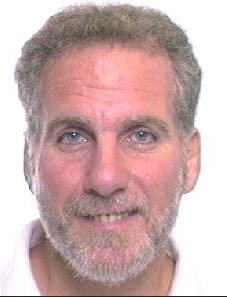Other Track Agendas3D-Printing in Life Sciences Conference | Organ-on-a-Chip Conference |

Wednesday, 8 July 201508:00 | Conference Registration, Coffee, and Breakfast Pastries | |
Opening Plenary Session: Opportunities in 3D-Printing and Organ-on-a-Chip Technologies and Approaches |
| | |
Plenary Session Chairman: Jon Rowley, Ph.D., Founder and CEO, RoosterBio |
| | 09:00 |  | Keynote Presentation Bioprinting in Regenerative Medicine and Beyond
Gabor Forgacs, Professor, University of Missouri-Columbia; Scientific Founder, Organovo; CSO, Modern Meadow, United States of America
|
| 09:30 |  | Keynote Presentation Organs-on-Chips: In vitro Surrogates for Accurate Human Bioemulation
Geraldine A Hamilton, President/Chief Scientific Officer, Emulate Inc, United States of America
All too often conventional cell-culture methods and animal testing fail to serve as true predictive models, unable to recapitulate human organ function or physiology. These shortcomings compel us to pursue more "humanized" alternatives to the traditional approaches, as we strive to attain authentic human response. This discussion will explore the bioemulation capabilities of our Organs-on-Chips technology and its potential use within drug development and safety pharmacology. Organs-on-Chips are in vitro surrogates of the human body that may accelerate the identification of novel therapeutics, ensure safety and efficacy, and reduce significant drug development costs. We review our platform and its incorporation of tissue-tissue interfaces, biochemical cues, mechanical forces and physiological perfusion in an organ-specific context. Our experience from organs such as the lung, liver, intestine and kidney consistently shows that these bioengineered microenvironments lead human cells to assume in vivo function and effectively reproduce organ-level physiology and disease responses. Based on experimental data collected from this platform, it is evident that Organs-on-Chips stand as a more predictive, human-relevant alternative to traditional drug development methods. |
| 10:00 |  | Keynote Presentation Can Multi-Organ Chips Be Used for Drug Development Studies?
Michael Shuler, Samuel B. Eckert Professor of Engineering, Cornell University, President Hesperos, Inc., United States of America
Effective human surrogates, created from combining human tissue engineered constructs with microfabricated systems, could have a major impact on drug development, particularly in making better decisions on which drugs to take into human clinical trials. Early prediction of human response would be crucial to such decisions. Our designs are guided by physiologically based pharmacokinetic models. We will describe possible approaches to use “pumpless”, low cost platforms to build such human surrogates for evaluation of potential response to drugs.
|
| 10:30 | Coffee Break and Networking | 11:00 |  | Keynote Presentation Microengineered Cell and Tissue Systems for Drug Screening and Toxicology Applications: Evolution of In-Vitro Liver Technologies
Martin Yarmush, Founding Director of the Center for Engineering in Medicine, Massachusetts General Hospital and Harvard Medical School, United States of America
|
| 11:30 | The Patent Landscape of Organs-On-a-Chip
Robert Esmond, Director, Sterne, Kessler, Goldstein & Fox P.L.L.C, United States of America
Organs-on-a-chip have present-day real-world uses such as for the preclinical testing of drugs. Thousands of patents have been filed on various aspects of organs-on-a-chip, including their manufacture. A company seeking to make, use or sell an organ-on-a-chip must consider the patent landscape. This talk will focus on ways to protect organs-on-a-chip innovation, patent filings directed to organs-on-a-chip technology, certain exceptions to patent infringement, as well as the possibility of future litigation. | 12:00 | Networking Lunch, Visit Exhibitors and View Posters | 13:30 |  Technology Spotlight: Technology Spotlight:
Solutions for Microfluidics: Precision Fluid Control, Novel Interconnects and Alternatives to the Classical Incubator
Thomas Corso, Chief Technical Officer, CorSolutions
For “cells-on-a-chip” approaches to become adopted as an industry standard, the support hardware surrounding these microfluidic devices must be developed and standardized. Current areas of difficulty include making connections to the microdevices, as well as providing controlled and precise fluid delivery. We report here a novel interconnect technology for coupling microfluidic, “cells-on-a-chip” devices with pumps and detectors of the macro-world. The interconnects offer reliability, compatibility with all substrate materials, ease-of-use with little training, flexibility for use with chips having varied architectures, chemical compatibility, allowance of maximum field of view for optical assessment, and have potential for automation. Additionally we will show a means for providing accurate flow control to the cultures on-chip. With the critical role that flow rate plays on the cell seeding process used to establish a microfluidic culture and on shear stress in maintaining cultures, it is advantageous to have a highly accurate means of fluidic control. It will be shown that when Human Umbilical Vein Endothelial Cells (HUVECs) are seeded onto optically transparent flow cells and subjected to controlled shear stress, the cells align, in the direction of flow, in response to the controlled laminar flow of media as delivered by the pump. The approach allows for re-circulating media through the on-chip cultures for the duration of the experiment. Finally the integration of pumps and connectors into a platform capable of providing a unique means of environmental control, as an alternative to a classical incubator, will be discussed.
| |
Session Title: Various Organ-on-a-Chip Platforms and Associated Applications |
| | 14:00 | Organs-on-Chip by Selective Assembly of Primary Cells Enabled by Dielectrophoresis in Microfluidic Devices
Martin Stelzle, Head of BioMEMS & Sensors Department, NMI at University of Tübingen, Germany
Our generic microfluidic technology employs dielectrophoresis to construct tissues in vitro by assembly of primary human cells. Active assembly of multiple cell types and constant perfusion produce organ-like morphologies. Results from liver and blood–brain barrier chips will be presented. | 14:30 | A "Human-on-a-Chip" platform - Aiming for a Paradigm Shift in Substance Testing
Uwe Marx, CSO & Founder, TissUse GmbH, Honorary Professor for Medical Biotechnology at the Technische Universität Berlin, Germany, Germany
Strategies to develop “human-on-a-chip” platforms are applying micro-physiological systems towards the in vitro combination of miniaturized human organ equivalents into functional human mini-organisms, which aim to replace systemic toxicity testing and efficacy assessment of new drug candidates in animals. We have developed a universal multi-organ-chip platform for long-term culture of human 3D organ equivalents interconnected within a common capillary microfluidic network, mimicking physiological blood flow. A standard microscopic slide format has been selected for the microfluidic multi-organ-chips. The human organs are scaled down by a factor of 1:100000. Proof of concept combining miniaturized human liver and skin equivalents at steady culture conditions over 28 days was achieved. Subsequently, repeated dose substance test assays with co-cultures of human skin interconnected with dendritic cells and human liver in combination with neuronal spheroids have been qualified. Finally, in addition to the two organ-chip assays, a four-organ-chip combining human intestine, liver, skin and kidney equivalents into a functional ADMET test assay has been established. | 15:00 | Integration of Cells with Silicon Devices for In vitro Tissue Engineering of Functional Systems for Preclinical Drug Discovery
James Hickman, Professor, Nanoscience Technology, Chemistry, Biomolecular Science and Electrical Engineering, University of Central Florida; Chief Scientist, Hesperos, United States of America
One of the primary limitations in drug discovery and toxicology research is the lack of good model systems between the single cell level and animal or human systems. This is especially true for neurodegenerative diseases such as ALS, Alzheimer’s, and spinal cord injury as well as for cardiac disease. In addition, with the banning of animals for toxicology testing in many industries body-on-a-chip systems to replace animals with human mimics is essential for product development and safety testing. Our research focus is on the establishment of functional in vitro systems to address this deficit where we seek to create organs and subsystems to model motor control, myelination and cognitive function, as well as cardiac subsystems. The idea is to integrate microsystems fabrication technology and surface modifications with protein and cellular components, with the aim of initiating and maintaining self-assembly and growth into biologically, mechanically and electronically interactive functional multi-component systems. The ability to control the surface composition of an in vitro system, as well as controlling other variables, such as growth media and cell preparation, all play important roles in creating a defined system for hybrid device fabrication and in vitro evaluation of surface modifications and their effect on cellular materials. Our advances in culturing adult rat, mouse and human mammalian spinal cord, hippocampal neurons, muscle and cardiac cells in a defined serum-free medium, suggest outstanding potential for answering questions related to maturation, aging, neurodegeneration and injury. | 15:30 | Coffee Break, Visit Exhibitors and Networking | 16:00 | Microfluidics and Biofabrication Approaches for Interrogation of Circulating Biomarkers
Shannon Stott, Assistant Professor, Massachusetts General Hospital & Harvard Medical School, United States of America
Advances in microfluidic technologies, biomaterials and molecular profiling have propelled the rapid growth and interest in achieving a ‘liquid biopsy’ in cancer. This presentation will discuss the various circulating biomarkers that are currently being isolated using microfluidics and their potential utility in the clinic. As part of this discussion, an overview will be provided on the three successive generations of microfluidic devices that our team has developed at MGH for the isolation of circulating tumor cells (CTCs) from patient blood. Through improvements with each generation of the CTC-chip, our group has been able to increase our ability to interrogate these rare circulating cancer cells and gain new insights into cancer biology and identify novel biomarkers. | 16:30 | Heart Disease on a Chip: Engineering Dysfunctional Cardiac Tissues for Drug Screening and Personalized Medicine
Megan L McCain, Assistant Professor of Biomedical Engineering and Stem Cell Biology and Regenerative Medicine, University of Southern California Keck School of Medicine, United States of America
Cardiovascular diseases are the leading cause of death in the United States and unforeseen cardiotoxicity is a common reason for market withdrawal of pharmaceuticals. These statistics highlight our limited understanding of heart disease as well as our lack of tools for reliably predicting cardiac function. One reason for these issues is that researchers have traditionally relied on model systems that lack physiological relevance to the human heart, such as rodents or simplified cell culture platforms that do not recapitulate the architecture or microenvironment of native cardiac tissue. Here, I will describe new model systems, known as “heart on a chip,” that we have developed using microfabrication, biomaterials, and tissue engineering to better mimic and study heart tissue in vitro. I will focus on several cardiac disease models “on a chip” we have engineered to (1) model fibrosis by tuning the elastic moduli of extracellular matrix hydrogel substrates, (2) model volume overload and heart failure by cyclically stretching engineered neonatal rat cardiac tissues, and (3) model a human inherited cardiomyopathy by engineering tissues with induced pluripotent stem cell (iPSC)-derived cardiac myocytes reprogrammed from patient skin fibroblasts. These “heart disease on a chip” platforms are useful for identifying cardiac disease mechanisms, testing drugs for both toxicity and efficacy, and, with the addition of patient iPSC-derived cardiac myocytes, screening the functional therapeutic effects of drugs on a patient-by-patient basis. | 17:00 | A Bioinspired Lung Alveoli Model with Physiological Relevance for Drug Discovery Research
Olivier Guenat, Head, Organs-on-Chip Technologies, ARTORG Center for Biomedical Engineering Research, University of Bern-Switzerland, Switzerland
The high attrition rate and the huge costs related to the drug development process have recently led to the emergence of advanced in-vitro models that better reproduce the cellular and biophysical/-chemical environment found in-vivo. In contrast to standard in-vitro systems, these models, called organs-on-chip, are expected to better predict drugs’s response in humans and are thus widely seen as having the potential to revolutionize the way drug discovery is made. The objectives of the ARTORG Lung Regeneration Technologies Lab are the development of advanced in-vitro models able to mimic specific parameters of the environment of healthy or diseased lungs. These systems, based on microfluidics, are aimed at better understanding the pathophysiology and –mechanism of specific respiratory diseases. One of the research directions under investigation in the lab focuses on the reproduction of a healthy and diseased (lung fibrosis) lung alveolar environment. A bioinspired microfluidic chip mimicking the air-blood barrier was developed that reproduces the cyclic mechanical strain induced by the respiration. Permeability assays performed with bronchial cell line revealed the effect of the mechanical strain as well as the size of the molecules studied. In a second set of experiment, primary epithelial cells from patients undergoing partial lung resection were exposed to cyclic stretch during 24h. The effect of the stretch was clearly demonstrated on those cells with a clear increase of inflammation marker IL-8 compared to the cells were cultured in a static mode. Finally, a model aimed at reproducing the alveolar epithelial microinjuries that are typical to pulmonary fibrosis will be shown. | 17:30 |  Technology Spotlight: Technology Spotlight:
Translational Challenges in Organ-on-a-Chip Development: From Academia to an Industrial Product
Holger Becker, Chief Scientific Officer, Microfluidic ChipShop GmbH
While a significant amount of academic results in the organ-on-a-chip field has been reported in recent years, the transition into commercially available products e.g. for the pharmaceutical industry appears to be challenging. This talk will highlight the technological challenges in the development and industrial manufacturing of organ-on-a-chip devices with emphasis on the translation of academically driven designs to commercially viable solutions. Examples for the integration of biological functionalities, surface functionalization and hybrid elements into microfluidic devices will be presented together with a strategic approach to reduce technical risk during the product development stage.
| 18:00 |  | Keynote Presentation Human 3D Skeletal Microphysiological Systems For Metabolic And Drug Toxicity Studies
George Truskey, R. Eugene and Susie E. Goodson Professor of Biomedical Engineering, Duke University, United States of America
Skeletal muscle has a key role in mobility and energy metabolism and diabetes. Skeletal muscle is a major site of drug toxicity, causing weakness and muscle loss. With an aging population sarcopenia is becoming more significant and alterations in muscle glucose metabolism lead to the onset of type 2 diabetes. To provide an in vitro functional screen, we developed three-dimensional (3D) human muscle bundles. The muscle cells formed striated multinucleated fibers and the engineered muscle bundles exhibit contraction in response to electrical stimulation and produce tetanus at frequencies above 20 Hz. Contractile force increased with culture time over a five-week period. Further evidence of functional maturity include expression of mature muscle proteins and normal calcium handling. Contractile behavior and myosin heavy chain expression were enhanced by addition of antimiRs to microRNAs 133a and 696. Engineered human muscle bundles exhibited toxicity to cerivastatin at nanomolar does doses whereas toxicity to lovastatin was not observed until doses were in the micromolar range, above typical therapeutic concentrations. Insulin-mediated glucose uptake was 1.5-2 times higher than glucose uptake in the absence of glucose. |
| 18:30 | Cocktail Reception: Premium Beers, California Wines, Appetizers and Networking on the 15th Floor of the Wyndham Boston Beacon Hill with a View of Boston and the Charles River Sponsored by MIMETAS | 20:00 | Close of Day 1 of the Conference. |
Thursday, 9 July 201508:00 | Coffee, Breakfast Pastries, Networking | |
Session Title: The Intersection of Microfluidics and Bioprinting -- Converging Fields Creates Opportunities in the Organ-on-a-Chip Space |
| | |
Session Chairman: Paul Vulto, Ph.D., Chief Technical Officer, Mimetas |
| | 08:30 | Artificial Gut for Engineering Microbial Communities
David Sun Kong, Technical Staff, Massachusetts Institute Of Technology, United States of America
The human gut microbiota is one of the most densely populated ecosystems of microorganisms on earth. A growing body of research is beginning to elucidate the diverse impacts the gut microbiota plays in human health and development, from nutrition, to disease, and even cognition. Recently, with the success of fecal matter transplants (FMTs) to treat infectious disease, microbes are emerging as a unique therapeutic. We will present model systems to both prototype and study complex polymicrobial systems for producing robust microbial communities that can be engineered at both the genetic level (subcellular) and population level (multicellular). | 09:00 | Microfluidic Spatial Control Technologies for Organ/Body-on-a-chip
Hiroshi Kimura, Professor, Micro/Nano Technology Center, Tokai University, Japan
Conventional cell-based assays in life science and medical application can be difficult to maintain cells functionally. Microfluidics is an emerging technology with potential to provide integrated environments for maintenance, control, and monitoring of surround of cells. Our research group works in mainly in fundamental technologies of microfluidic devices and systems, and their applications to biological sciences including a Body/Organ-on-a-chip. In this presentation, we introduce integrated microfluidic platforms, which allow precisely control of the cell culture environment on Body/Organ-on-a-chips. The microfluidic structure in the devices can mimic a physiological environment in vitro. Moreover, functional components, such as sensors, valves and pump, can be integrated into the devices by microfabrication. We have applied the devices to organ cell assay, embryo culture, and pluripotent stem cell (PSCs) differentiation. Performance of the devices was examined through cell culture and monitoring of dynamic activity of cells. Because dynamic cell activity could be maintained and measured, these devices might have applications in drug screening and toxicity testing. | 09:30 | Modeling and Simulation of Microfluidic Organ-on-Chip Devices
Matthew Hancock, Managing Engineer, Veryst Engineering, LLC, United States of America
Modeling and simulation are key components of the engineering development process, providing a rational, systematic method to engineer and optimize products and dramatically accelerate the development cycle over a pure intuition-driven, empirical testing approach. Modeling and simulation help to identify key parameters related to product performance (“what to try”) as well as insignificant parameters or conditions related to poor outcomes (“what not to try”). For microfluidic organ-on-chip devices, modeling and simulation can inform the design and integration of common components such as micropumps, manifolds, and channel networks. Modeling and simulation may also be used to estimate a range of processes occurring within the fluid bulk and near cells, including shear stresses, transport of nutrients and waste, chemical reactions, heat transfer, and surface tension & wetting effects. I will discuss how an array of modeling tools such as scaling arguments, analytical formulas, and finite element simulations may be leveraged to address these microfluidic organ-on-chip device development issues. I will also work through a few examples in detail. | 10:00 |  Technology Spotlight: Technology Spotlight:
Maskless Aligner Systems for Device Fabrication
Niels WIjnaendts van Resandt, Director, Sales and Marketing North & South Americas, Heidelberg Instruments, Inc.
A discussion of the newly Introduced MLA Series Maskless Aligner systems from Heidelberg Instruments and their positive impact in the device development cycle. This presentation will present detailed features and advantages of the MLA100 and MLA150 systems and review exposure results.
| 10:30 |  | Keynote Presentation Vascularized Organs-on-a-Chip
Roger Kamm, Cecil and Ida Green Distinguished Professor of Biological and Mechanical Engineering, Massachusetts Institute of Technology (MIT), United States of America
A vascular network is an essential part of most organs in vivo, so it is natural that in vitro organ models also be vascularized. Yet, developing a vascular system on a chip, especially the microvessels, generally presents one of the greatest engineering challenges. In recent years, several groups have either engineered vascular networks, or induced them to grow within their in vitro systems. These are comprised either of a formed channel lined with endothelial cells, a network that grows within a formed hydrogel, or a combination of the two. Models of this type have been employed to simulate metastatic cancel or to mimic certain aspects of organ function such as the blood brain barrier. In this talk, I will review the current state-of-the-art and propose ways forward in obtaining vascularized models of dense, cellular tissues. |
| 11:00 | Coffee Break, View Posters, Visit Exhibitors and Networking | 11:30 | 3D Co-cultures and Membrane-free Boundary Tissues for Enhanced Compound Screening
Paul Vulto, Managing Director, MIMETAS, Netherlands
The challenge in creating better biomimetic models lies in capturing the 3D morphology, heterogeneity and boundary aspects of tissues. Our platform allows for a stratified layering of extracellular matrix gels optionally alternated with medium perfusion channels. Multiple lanes could be defined with the help of capillary pressure barriers called phaseguides. Clusters of cells are grown in the ECM matrix to provide a natural 3D tissue environment. Monolayer of cells deposited against the ECM matrix form boundary tissues that typically develop into tubuli. The 3D environment enables long term culture (> two months) and differentiation of cell clusters. iPS neurons were grown over two months and showed both induced and spontaneous electrophysiological activity as shown by in chip transfected calcium reporters. Lgr5+ small intestinal organoids developed crypt-villi morphology that is typically associated with gut epithelium. Endothele and epithele vessels were co-cultured with fibroblasts and pericytes to capture the heterogeneity of the kidney. Our platform is based on a microtiter plate footprint, harboring 96 culture chambers. Thin 175µm glass optical access renders the system fully compatible with both fluorescent and luminescent readout. Our platform is an important step in making Organ-on-a-Chip available for high throughput compound screening. | 12:00 | Mechanical Regulation of Bronchospasm: A Lung-on-Chip Model of Asthma
Onur Kilic, Researcher, Johns Hopkins University, United States of America
This study presents a lung-on-chip platform that allows biomechanical studies of bronchoconstriction and asthma. The PDMS-based device consists of a human airway epithelial layer in an air-liquid interface, and a human airway smooth-muscle layer, separated by a perforated membrane. A pressure gradient is introduced to the upper layer of the lung chip, so that epithelial cells experience compressive stresses similar to physiological levels encountered during bronchospasms. To measure the biomechanical effects of the secretions caused by this compressive stress on smooth-muscle cells, contraction or relaxation in the smooth-muscle layer is measured using magnetic beads introduced into the bottom layer of the chip. Absolute and relative stiffness and their change over time is then quantified using optical magnetic-twisting cytometry. The results show that compressive stress applied on the epithelial layer leads to strong contraction in the smooth muscle layer, with more than two-fold change in average stiffness within two minutes. The study further shows that mechanical stresses on the epithelial cells activate the mechanosensor and transcriptional regulator YAP, which differentially activates COX1 and COX2, leading to secretions that contract smooth-muscle cells. The results indicate that short term effects of compressed epithelial cells on smooth-muscle cells may reinforce bronchoconstriction through positive feedback. | 12:30 | Networking Lunch, Visit Exhibitors and View Posters | 13:30 |  Technology Spotlight: Technology Spotlight:
Enhancing the Functionality of Organ-on-a-Chip Devices
Harald Denz, CEO, DENZ BIO-Medical GmbH
Ways to manufacture and integrate a variety of functions into an organ-on-a-chip system; Including the supply of appropriate laboratory equipment for the controlled operation of these systems.
| |
Session Title: Emerging Biofabrication Technologies and Emerging Company Showcase |
| | 14:00 |  | Keynote Presentation Organs-on-Chips to Screen for Drug Efficacy and Toxicity
Kristin Fabre, Microphysiological Systems Lead, Drug Safety & Metabolism, AstraZeneca, United States of America
The Tissue Chip Program is comprised of several academic and government entities, aimed to bioengineer microphysiological platforms (or chips) that mimic human organ systems. These MPS platforms would be utilized for predicting efficacy and toxicity of candidate compounds faster, cheaper and with less use of animal models compared with current methods. The over-arching goal at the end of the 5-year project is to incorporate human iPSC-dervied cell sources (inducible pluripotent stem cells) into the corresponding organ modules, and then to create an integrated Human-on-a-Chip as a way to study drug response observed within the human body. |
| 14:30 | Application of Custom-built Acousto-fluidic Perfusion Bioreactor for Cartilage Tissue Engineering
Rahul S Tare, Lecturer, University Of Southampton, United Kingdom
We have recently reported on the application of a novel acousto-fluidic perfusion bioreactor for the generation of viable, three-dimensional, scaffold-free, hyaline cartilage-like constructs of human articular chondrocytes (Lab Chip 2014; 14:4475-85). This system harnesses ultrasonic standing wave fields to promote rapid aggregation of a single cell suspension into 3D aggregates, which are levitated by the ultrasound in the lumen of the bioreactor in what is effectively a zero gravity environment, and cultured for up to 21 days in chondro-inductive medium, which is perfused continuously through the system to promote cartilage formation. The development of the acousto-fluidic perfusion bioreactor technology and its successful application for ex vivo generation of cartilage grafts, which have the potential for subsequent use in the clinic for the repair of partial thickness cartilage defects, will be elucidated in the presentation. | 15:00 | Contractile and Electrophysiological Detection of Drug-Induced Cardiotoxicity Using Integrated Silicon Technologies
Thomas Pauwelyn, Researcher, IMEC/KU Leuven Belgium, Belgium
Integrated silicon based technologies hold great potential for implementation in organ-on-a-chip devices. Herein, we present the use of lens-free imaging and microelectrode arrays for the detection of contractile and electrophysiological parameters in order to evaluate drug-induced cardiotoxicity.
| 15:30 | Coffee Break and Networking | 16:00 | Bioreactors for Megakaryocyte Studies and Platelet Formation: Where do we Stand?
Jonathan Thon, Assistant Professor, Brigham and Women's Hospital/Harvard Medical School, Co-Founder -- Platelet BioGenesis, United States of America
The production of lab-generated human platelets is necessary to meet present and future transfusion needs. We have shown that it is feasible to generate functional megakaryocytes from both human embryonic and induced pluripotent stem cell cultures. The most significant obstacle to ex vivo platelet production has been triggering megakaryocytes to produce platelets at yields necessary to make production of a platelet transfusion unit both clinically and financially practical. Evidence suggests that key physiological characteristics of the bone marrow environment including extracellular matrix composition, bone marrow stiffness, endothelial cell contacts, and vascular shear stresses trigger platelet release. We recently developed a scalable microfluidic platelet bioreactor that recapitulates these major characteristics of human bone marrow. By exposing megakaryocytes to physiological shear stresses of ~600 mPa we showed an improved rate and extent of platelet production, and reduced the time to initiation of platelet release. Morphology, ultrastructure and function of our lab-generated platelets was consistent with blood platelets. To assess lab-generated platelet quality/safety in vitro and perform function studies in vivo, we will need to achieve a total yield of at least 1x108 PLTs per 300 µL. To achieve 3x1011 platelets per 300 mL (human transfusion unit), bioreactor designs will need to be further adapted to support continuous media perfusion and parallelization, maximize MK/progenitor cell zonal distribution and trapping, and equalize shear stress exposure, while limiting hemodynamic-activation of platelets. | 16:30 | Close of Day 2 of the Conference. |
|

 Add to Calendar ▼2015-07-08 00:00:002015-07-09 00:00:00Europe/LondonOrgan-on-a-Chip ConferenceSELECTBIOenquiries@selectbiosciences.com
Add to Calendar ▼2015-07-08 00:00:002015-07-09 00:00:00Europe/LondonOrgan-on-a-Chip ConferenceSELECTBIOenquiries@selectbiosciences.com